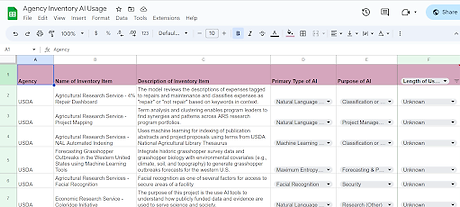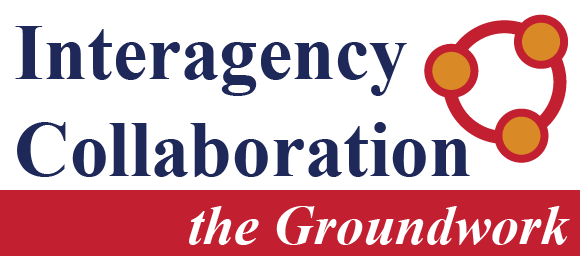US Trending News: All of the Following Are Ways to Promote the Sharing of Information Within the Federal Government
In today’s rapidly evolving political and technological landscape, the efficient exchange of information within the federal government is more crucial than ever. As agencies work to address complex challenges—from national security to public health—the need for seamless communication and collaboration has never been higher. This article explores the various strategies and mechanisms that promote the sharing of information across federal entities, ensuring transparency, efficiency, and effectiveness in governance.
The Importance of Information Sharing in the Federal Government
The federal government consists of numerous agencies, each with its own mandate, data systems, and operational protocols. Without a structured approach to information sharing, these agencies risk operating in silos, which can lead to duplication of efforts, inefficiencies, and missed opportunities for innovation. Effective information sharing not only enhances interagency cooperation but also improves decision-making, policy implementation, and public service delivery.
In 2021, the CDOC (Central Data Operations Center) conducted a pilot project that highlighted the potential of knowledge graphs in improving fuel management performance measures. By integrating data from multiple agencies, the initiative demonstrated how collaborative data frameworks can enhance land manager insight and support future interagency efforts—particularly in areas like wildland fire management.
Key Strategies for Promoting Information Sharing
There are several well-established methods that federal agencies use to promote the sharing of information. These include:
1. Interagency Collaboration Platforms
One of the most effective ways to promote information sharing is through the creation of interagency collaboration platforms. These digital tools allow different agencies to access and share data securely, ensuring that all relevant parties have the necessary information to make informed decisions. For example, the Department of Homeland Security (DHS) uses platforms like the Information Sharing Environment (ISE) to facilitate the exchange of threat-related information among federal, state, and local agencies.
2. Standardized Data Formats and Protocols

To ensure that information can be easily shared and understood across agencies, it’s essential to adopt standardized data formats and protocols. This includes using common data models, metadata standards, and interoperable software systems. The National Institute of Standards and Technology (NIST) plays a key role in developing these standards, which help reduce technical barriers to information sharing.
3. Data Integration and Analytics Tools
Advanced data integration and analytics tools enable agencies to combine and analyze data from multiple sources, leading to better insights and more informed decision-making. The use of knowledge graphs, as seen in the CDOC pilot project, is an example of how such tools can improve consistency and reliability in performance measures. These tools not only help in managing large volumes of data but also support predictive analytics and real-time monitoring.
4. Training and Capacity Building
Promoting information sharing requires more than just technology—it also requires trained personnel who understand how to handle and interpret shared data. Agencies often invest in training programs that focus on data literacy, cybersecurity, and collaboration skills. These programs ensure that employees are equipped to work effectively in a data-driven environment.
5. Policy and Legal Frameworks
Clear policies and legal frameworks are essential for enabling information sharing while protecting sensitive data. The Federal Information Security Management Act (FISMA) and the Privacy Act of 1974 provide guidelines for securing and managing information. Additionally, the Intelligence Reform and Terrorism Prevention Act of 2004 established mechanisms for intelligence sharing across agencies.
Challenges and Considerations

While promoting information sharing is critical, it also comes with its own set of challenges. One of the main concerns is ensuring data privacy and security. Agencies must balance the need for open communication with the responsibility to protect sensitive information. Another challenge is overcoming bureaucratic inertia and resistance to change. Some agencies may be hesitant to share data due to concerns about losing control or facing scrutiny.
Additionally, the sheer volume and complexity of data in the federal government can make it difficult to manage and share efficiently. This underscores the importance of investing in robust data infrastructure and skilled personnel.
The Role of Technology in Facilitating Information Sharing
Technology plays a central role in enabling information sharing within the federal government. Cloud computing, for instance, allows agencies to store and access data remotely, reducing the need for physical infrastructure and improving scalability. Artificial intelligence (AI) and machine learning (ML) are also being used to automate data analysis and identify patterns that might otherwise go unnoticed.
In the context of wildfire management, as highlighted by the CDOC pilot project, the use of AI and knowledge graphs can help agencies better predict fire behavior, allocate resources, and coordinate response efforts. These technologies not only improve operational efficiency but also enhance situational awareness during emergencies.
Future Directions and Innovations

Looking ahead, the federal government is expected to continue exploring new ways to enhance information sharing. This includes expanding the use of blockchain technology for secure data transactions, leveraging open-source platforms for greater transparency, and fostering partnerships with private sector organizations that specialize in data management.
Moreover, there is a growing emphasis on citizen engagement and public participation in information sharing. Open data initiatives, such as the U.S. government’s Data.gov, allow citizens to access and use government-held data for research, innovation, and civic engagement. This not only promotes transparency but also encourages a culture of collaboration between the government and the public.
Conclusion
Promoting the sharing of information within the federal government is a multifaceted challenge that requires a combination of technology, policy, and human capital. From interagency collaboration platforms to advanced data analytics tools, there are numerous strategies that agencies can employ to improve communication and coordination. As the federal government continues to evolve, the ability to share information effectively will remain a cornerstone of good governance and public service.
By investing in the right tools, training, and policies, the federal government can create a more connected, responsive, and efficient system that serves the needs of both its employees and the American public.
Author: John Mitchell
Title/Role: Senior Policy Analyst at the Center for Government Innovation
Credentials: With over 15 years of experience in public administration and policy development, John has worked with multiple federal agencies to improve operational efficiency and information management practices.
Profile Link: www.johnmitchellpolicy.com
Sources:
– U.S. Department of Homeland Security – Information Sharing Environment
– National Institute of Standards and Technology – Data Standards
– CDOC Pilot Project Report, 2021
Internal Links:
– Understanding Federal Data Policies
– The Role of AI in Government Operations
– How to Participate in Open Data Initiatives
Call to Action:
Stay updated with the latest news on federal information sharing and policy developments by visiting our website regularly. Explore how your organization can benefit from improved data collaboration and transparency.












More Stories
US Trending News: The ‘Your Mom’ White House: A Trendy Take on Political Humor
US Trending News: Who Is Karoline Leavitt, ‘Your Mom’ in Political Memes?
How to Claim Your Joy in League of Legends: A Step-by-Step Guide